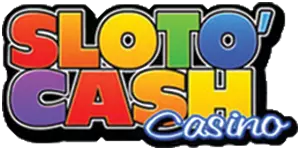Craps Money Management
Bankroll Management Tips for Craps Players
Gambling can be fun and exciting, but the truth of the matter is that the majority of players are doomed to lose their money, because each game gives the casinos a mathematical advantage that ensures they meet their margin in the long term. This house advantage is inherent to all gambling games, including craps, in which the majority of available wagers are heavily skewed in favor of the house, soaring as high as 16.67% for the Any 7 bet.
Despite the fact that craps players are up against a negative-expectation game and are bound to get in the red in the long run, they can occasionally turn a profit by incorporating various betting strategies into their play. However, no strategy can save them if they lack the discipline and knowledge of how to manage their money.
Money management is the alpha and the omega of becoming a consistent craps winner. The overwhelming variety of bad bets, along with the breakneck speed of the game, is sufficient to wipe out the undisciplined craps player, leaving them with no money in their pockets. That is why using a money-management strategy and strictly adhering to it is essential for all craps players.
Below, we describe in detail several money management tips such as setting up a separate bankroll for craps games and splitting it into smaller session bankrolls. Determining one’s win goals and loss limits is also an essential part of the process. This craps money-management guide will explain how the Guarantee and Excess Approach works. We will also briefly mention some useful tips to minimize one’s losses as well as craps betting systems to avoid. But how do you do that? Read on to find out.
-
 Sign Up Bonus
Sign Up Bonus
Up to $3500
350% Bonus!9.7 -
 Sign Up Bonus
Sign Up Bonus
Up to $500
400% Bonus!9.4 -
 Sign Up Bonus
Sign Up Bonus
Up to $2000
200% Bonus!9.3
Setting Up a Separate Bankroll to Fuel Your Craps Play
Money management is nothing more than limiting the amount you take to the craps tables, as well as the sums you are willing to risk per bet. Setting up a bankroll to fuel your craps play is the crux of money management and where you should start. In the context of gambling, the term bankroll refers to the amount of money you bring to the casino to play with. The amount you risk per bet, your winning goal, and your loss limit all depend on the size of your bankroll.
It is your own business how much money you can afford to invest into your craps play. It could be as much as $10,000 or as little as $300. That being said, you should be realistic about your expectations. You cannot expect to work miracles when you are woefully under-bankrolled.
It is important to emphasize that you should keep your craps bankroll separate from all your other funds. You should never play with the money required for more essential things, such as paying your rent, mortgage, or bills, paying your kids’ piano lessons, repairing your car, and so on. Mixing your day-to-day funds with your gambling money is the surest and quickest way to financial ruin.
Allocating Session Bankrolls
Craps players are generally advised to split their overall bankroll into smaller session bankrolls. How much you allocate for a single session depends on the minimum bet allowed at the craps table.
Gambling experts advise craps players to start a single session with a bankroll that amounts to at least ten times the size of their first bet. In other words, you need a session bankroll that is large enough to carry you through ten different shooters. The principal idea here is to bring enough money with you so that you can stay at the table long enough until a favorable trend develops.
Let’s assume you are a Pass Line bettor who intends to play at a craps table with a $10 minimum. You bet $10 on the Pass Line. The shooter establishes a point of 4; you take 1x odds for another $10 and make two Place bets on numbers 6 and 8 because they have the highest number of winning combinations. The overall amount you have at stake at the table stands at $30 in this instance. If you approach the table prepared money-wise, you should buy in for $300 for this session.
Provided that your overall starting capital is only $600, your bankroll for each of the three sessions will be $200. Respectively, you will have to adjust the amount you wager per shooter. For example, you can wager $5 on the Pass Line, take 1x odds, and make two Place bets on numbers 6 and 8 for a total of $20 per shooter.
This is not to say you should remain at a craps table until your session bankroll gets wiped out entirely. On the contrary, you should end a losing session as soon as you experience four consecutive losses. You collect the remainder of your session bankroll and start exploring the casino floor for another hot table. When you find one, you buy in with your second batch of $300 and proceed in the same manner until you either accomplish your win goal or reach your loss limit.
Your Win Goals for a Craps Session
Most casual players commit the serious mistake of overstaying their welcome at the craps table, so to speak, even when they are already way ahead. Pushing your luck out of sheer greed is the surest way to give back all your net profits and then some to the house.
The easiest way to prevent this misfortune from happening is to know when to quit. And how do you know when to call it quits? You set up a win goal for yourself and stick to it religiously. This will give you a clear target to aim for and enable you to generate small yet consistent profits.
So how much should your win goal be? Well, this depends entirely on the starting capital you intend to invest in craps play. The recommended percentage for your win goal in craps is 20% of your bankroll. So if your overall bankroll for the day is $1,000, you can call it quits after generating $200 in net profits.
Ideally, you leave the casino as soon as you have reached the 20% win goal. However, if you feel you are on a hot roll, you can continue playing craps as long as you follow the principles of guarantee and excess.
The Guarantee and Excess Approach
Most undisciplined bettors dread setting a win goal for themselves because they mistakenly presume it limits the profits they can generate at the craps tables. However, this is not necessarily the case, at least not if you adopt the guarantee and excess approach when you are ahead.
Let’s show you how this works with an example. Suppose you have reserved a session bankroll of $300 for craps play and your win goal is 20%, or $60. The trends at the table are favorable, and you end up reaching your $60 win goal for a total of $360. What you should do at this stage is tuck away your original $300 session bankroll and then divide the net profits of $60 into two equal parts of $30 each. You tuck away $30 along with your initial bankroll. This is your guarantee, which means you will leave the casino with $30 in net profits no matter what happens from this point onwards.
The other $30 are your excess, which you can use to continue playing when the trends at the table are on your side. You proceed in the same manner, i.e. you break down your winnings into guarantees and excesses. Suppose the shooter is so hot you end up generating an additional $20 with your excess. You pocket your guarantee of $10 and add the other $10 to your excess. Now you are sitting on net profits of $40 plus your initial $300.
You continue implementing this approach as long as you have sufficient excess left to play with. The trends will turn against you at a certain point, causing your excess to plummet. There is no need to attempt to soldier on until you lose your entire excess; you can call it quits for the day as soon as you recognize the unfavorable trend. The bottom line is that you will inevitably leave the casino as a winner if you utilize the guarantee and excess approach.
Your Loss Limits for a Craps Session
The sad reality is that most recreational gamblers will continue wagering until they have cleaned out the entire sum they brought to the craps table. This usually happens when the person suffers a devastating losing streak but stubbornly continues to play in a desperate attempt to recover their massive losses.
Such people take comfort in the fact they were gambling with money they “can afford to lose”. This, however, does not prevent them from experiencing the nauseating feeling one gets when walking out of the casino empty-handed.
Provided that your bankroll is $900 and you settle for the recommended 50% loss limit, you break this amount into three sessions of $300 each. You wrap up a session as soon as you have lost $150. You collect the remaining $150 and walk away from the table. If you end up experiencing three bad sessions, the worst thing that could happen is that you go home with $450, or half of your starting bankroll for the day. Sounds better than returning with nothing, right?
Capitalizing on Hot Tables and Minimizing Losses
Streaks are inherent to games of chance like craps, so the most natural thing for a smart gambler to do is observe and look for hot tables with favorable trends. When you enter the casino, the first thing you should do is walk around, observe the games, and determine which craps tables are cold and which ones are hot. Sometimes tables can also be choppy, which is to say winning and losing streaks are shorter and alternate, so that you constantly break even but struggle to get ahead.
Many experienced craps players chart craps games and buy in only at tables where favorable trends occur. They implement this approach to preserve their bankrolls and capitalize on hot tables.
Charting enables them to find tables with trends that correspond to the direction in which they wager, since there are two groups of craps players, “right” or “do” bettors who are backing the shooter and “wrong” or “don’t” bettors who are wagering against the shooter, hoping that he/she will throw a craps number on the come-out roll or sevens out before rolling the point.
So, a wrong bettor would look for tables where shooters repeatedly seven out or fail to roll the point, while those who are betting with the dice would take a seat at tables where the Pass Line wins time and again.
You know a certain table is cold for the right bettor when the shooters throw point numbers on the come-out roll only to seven out on the next toss, with the process repeating itself time and time again. However, if you are a wrong bettor, this might be just the right table for you.
The surest way to minimize your losses is to never attempt to weather out a losing streak. When a table gets cold, you immediately leave it and start charting another craps game. Riding it out and waiting for the unfavorable trends to turn into favorable ones will likely cause you to incur losses that are impossible to recoup. If a favorable trend changes immediately after you buy in for a given table, you quit as soon as possible.
To give you an example of what to look for, let’s presume you are betting with the dice and use a betting system that requires you to wager on the Pass Line, take odds, and make Place bets on two numbers after the shooter establishes a point. If that is the case, you look for a table with fewer wrong bettors, as this shows the game is currently cold for Pass Line bettors like yourself.
On a side note, another way to minimize your losses is to manage your bankroll more conservatively, especially if you have a smaller amount at your disposal. The worst thing a craps player can do is overbet their bankroll. If you overbet, you risk suffering a considerable dent in your budget that is impossible to recuperate from. This can happen even after two or three losing rolls, mind you. Smart, yet under-bankrolled players prefer to stick to the table minimum or close to it until they generate enough money to allow them to play more aggressively.
The Regression Approach
This approach is recommended for sufficiently banked players who can afford to wager more than the table minimum and who prefer to make even-money craps bets such as the Pass/Don’t Pass, although it also works for Place bets. The main premise of this approach is that you must wager more than the minimum and, if you happen to win, you reduce your next wager to the minimum. How much you wager on the first coup depends on the size of your session bankroll.
So suppose you join a hot craps table with a higher minimum of $10. You bet $20 on the Pass Line, the shooter throws a 7 on the come-out roll, and you win $20 at even odds for a total of $40. The key thing here is for you to collect your original $20 along with half of your net profits and then drop to the table minimum by betting $10 on the next roll. This way, you secure net profits of $10 even if the next throw results in a loss for you. If you win on the second roll as well, you can start betting more aggressively.
More aggressive players sometimes prefer to keep their original wager and decrease to the table minimum after they have secured two or even three consecutive wins. Needless to say, this aggressive approach calls for a larger bankroll.
Craps Betting Systems to Avoid
If your goal is to become a consistent winner at craps, you should forget all about using negative progressive systems. In fact, positive progressions are not that effective either, but at least you do not expose your bankroll to such a huge risk. These systems are inherently flawed, and the only thing you are likely to accomplish with them is the total wipe-out of your bankroll. More importantly, their impact on the odds is nil; they cannot improve your chances of winning.
All negative progressions rely on the premise that the player wagers more after a losing roll and reduces the wager to a certain amount following a win. The idea here is that pressing your bets during a losing streak enables you to recover from your massive losses after a single win. The most popular system of this kind is the Martingale, where you double your wager after each losing roll and return to the beginning of the progression once you register a win.
During a streak of 5 losing rolls with a base betting unit of $10, the Martingale progression runs as follows – $10, $20, $40, $80, $160, and $320. But do you have the guts and the bankroll to wager $320 on the sixth roll after such a long succession of losses? Probably not. And even if you do win, you will register net profits of one base unit only, or $10 in this case.
Mind you, some negative progressions, like the Fibonacci (yes, it uses the famed sequence where each number is equal to the total of the previous two), are even steeper than the Martingale, causing you to expose even more money to risk during unfavorable streaks.
The main reason why progressions are useless is that they do not alter the odds of winning. You stand the same chances of winning or losing with or without implementing these systems. Then again, negative progressions require you to have a huge bankroll just to weather out a longer losing streak and end up with a meager win. Obviously, if you join the craps table with a $300 session bankroll, you will get wiped out after your fifth bet since you will be unable to invest enough money on the next roll to continue the progression.
If you still insist on implementing such systems despite their proven flaws and inefficiency, we advise you to at least choose positive progressions, where bets are increased after a win and reduced following a loss, as these are not as risky.


